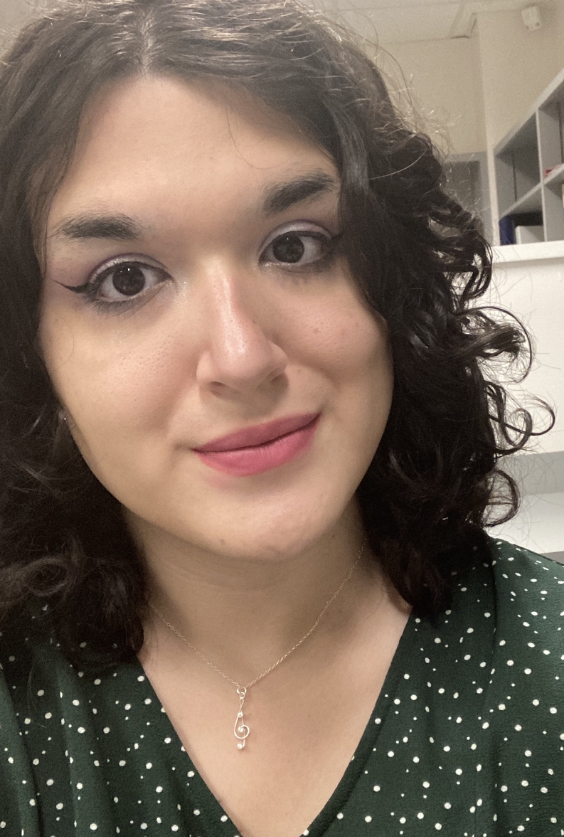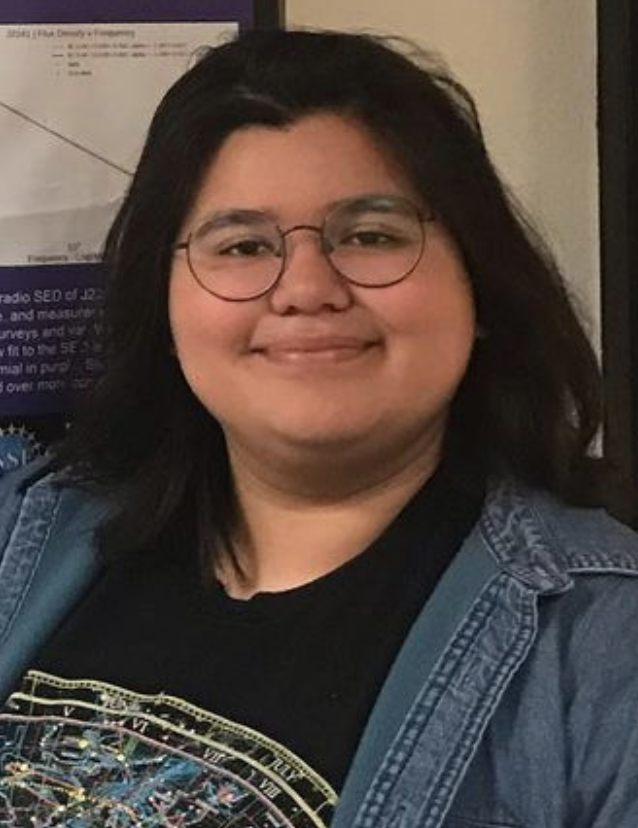High school, undergrad, and graduate students all working together
Jo Vazquez
Grad Student
Investigating how the gaseous filament known as the Smith Cloud is dissolving as it traverses the Milky Way galaxy’s hot halo. For this research, she is combing Hubble Space Telescope and Green Bank Telescope spectroscopic observations.
Could this be you?
Post doc & grad student wanted
Our research group is expanding. We are leading a large Archival Legacy Hubble Space Telescope (HST) program in which we will characterize the large-scale galactic wind from the nearby Large Magellanic Cloud (LMC) galaxy. This 30-million solar mass outflow is being ejected by supernovae explosions occurring all throughout this galaxy. We will explore the properties of this wind UV absorption-line spectroscopy taken toward 140 stars in the LMC as a part of the HST’s Ultraviolet Legacy Library of Young Stars as Essential Standards (ULLYSES) program. We will further use hydrodynamical observations and mock simulations to investigate this wind.
Jaq Hernandez
Undergrad Student
Determing the physical properties of gas clouds as they flow toward our Galaxy. For this research, they are characterizing the absorption signatures of the Smith Cloud in Hubble Space Telescope observations and are using Cloudy radiative transfer simulations to model this gas cloud.
TCU Undergrads wanted!
Are you a Physics and Astronomy major interested in doing research? Do you have little to no research experience, but are driven, work well in teams, and have a bit of spare time? Contact Dr. Kat Barger and inquire about research possibilities with our group.
Past Members
Although they are no longer at TCU, they all made a lasting impact.

Dr. Drew Ciampa
Grad Student 2021
Determined the extent and morphology of the Large Magellanic Cloud’s supernova driving galactic wind by mapping the emission from the ionized gas as a grad student. While working on his Ph.D., he completed 1/2 of an MBA through our department’s business option. He is now at TCU’s Neeley School of Business completing his MBA.

Dr. Jing Sun
Grad Student 2019
Explored galaxies that are isolated and in pairs to decipher how galaxy interaction affects their star formation using the SDSS IV/MaNGA survey as a grad student. She is now a postdoc modeling Earth’s atmosphere and Oceans at Tsinghua University.

Cecilia Vega Orozco
REU 2020
Explored the ionization conditions of interacting dwarf galaxies in the Mapping Nearby Galaxies with APO (MaNGA) observations.

McGilley Simons
Undergrad 2020
Deciphered the ionization conditions of interacting dwarf galaxies using the Mapping Nearby Galaxies with APO (MaNGA) observations.

Austin Vent
REU 2019
Mapped the ionized gas surrounding a star-formation region in the Leading Arm of the Magellanic Clouds using Wisconsin H-alpha Mapper observations.

Alec Creel
Undergrad 2018
Modeled the physical conditions of the Leading Arm of the Magellanic Clouds using Cloudy radiative transfer simulations that were anchored by Hubble Space Telescope observations.

Hannah Richstein
Undergrad 2018
Investigated how the physical conditions in dwarf galaxies vary using Mapping Nearby Galaxies with APO (MaNGA) observations. She is now an astronomy grad student at the University of Virginia.

Cannan Huey-You
High School 2017
Explored the 3D position-position-velocity structure of the Complex A high velocity cloud that is descending toward the Milky Way. For this as part Research Apprentice Program project he used hundreds of thousands of Green Bank Telescope observations. He has since joined TCU as an Engineering major.

Megan Tillman
High School 2016
Investigated how the physical conditions in dwarf galaxies vary using Mapping Nearby Galaxies with APO (MaNGA) observations as part of our Department’s Research Apprentice Program.

Becky Bender Jutzi
High School 2016
Investigated how the physical conditions in dwarf galaxies vary using Mapping Nearby Galaxies with APO (MaNGA) observations as part of our Department’s Research Apprentice Program.












